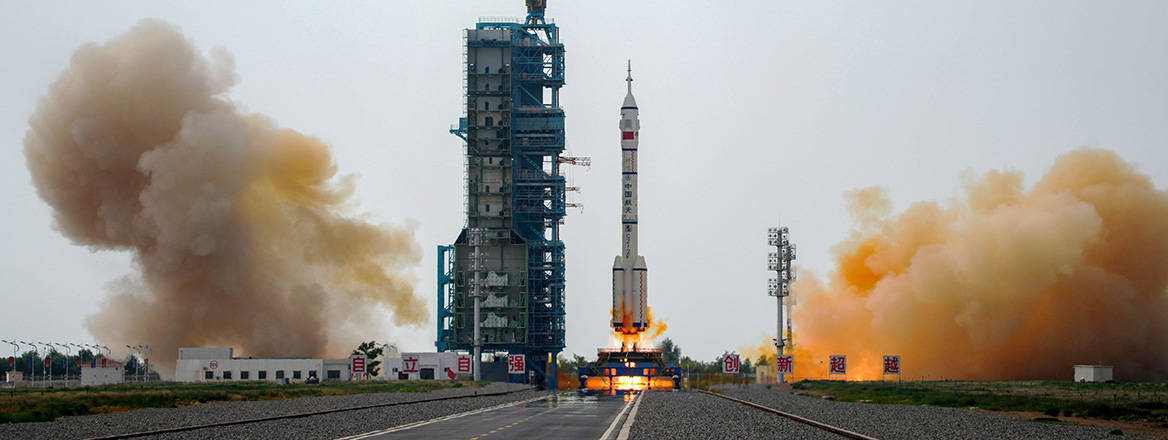RUSI
|
|
You Can’t Hide in Space Anymore: China’s Shenlong Spaceplane
The Chinese spaceplane Shenlong has carried out a number of close-proximity manoeuvres since launching in December 2023. This is consistent with wider patterns observed of Chinese space assets, as well as the country’s long-term ambitions for space.

Hiding both manoeuvres and ambitions in space is getting more and more difficult. Not only are sovereign capabilities for conducting Space Situational Awareness (SSA) becoming more detailed and accurate, but commercial providers are also able to observe what is happening in space. SSA is now not only carried out by radar stations on Earth but also increasingly from space itself, including through optical sensors, which can help verify physical features of spacecraft or space assets.
In recent months, special attention has been paid to two spaceplanes in orbit: the Chinese Shenlong and the US’s X-37B. This attention is due in part to the extreme secrecy in which both projects have been shrouded, which has in the past led to wild speculation as to their exact purpose and capabilities. Both US and Chinese spaceplanes are launched on a rocket, and remain in space for longer periods of time before being able to land back on Earth through a runway landing. The technology is similar to – and in fact based on – the space shuttle, though both spaceplanes are uncrewed.
Shenlong’s Latest Activities
The Chinese spaceplane Shenlong embarked on its third deployment in December 2023. The timing was likely no coincidence, considering the US’s X-37B was scheduled to launch in the same timeframe, though it was delayed (twice).
Chinese proximity activities in geostationary orbit have raised eyebrows internationally, not least because many high-value military assets are placed in that orbit
It now seems that Shenlong, after approximately half a year in orbit, is conducting proximity operations with an object it released a few days prior. It is not clear if the object was recaptured. This behaviour is not entirely new. In fact, private company LeoLabs observed similar proximity operations that took place during Shenlong’s previous flight.
Proximity operations usually grab the attention of space watchers, as they can serve nefarious purposes. The ability to manoeuvre close to other satellites is seen as dangerous for several reasons: the asset could eject a projectile close to another satellite, damaging it as a result, eavesdrop on another satellite’s signals or even disrupt them. However, close-proximity manoeuvres are not always nefarious in nature – they are in fact needed if we want to operate in a sustainable space environment, as these technologies also enable refuelling and general maintenance of satellites, thereby increasing their lifetime in orbit and helping to reduce space debris.
The manoeuvre that took place is consistent with other Chinese accomplishments in space. During the Shijan 21 mission, a Chinese satellite dragged another satellite to a so-called graveyard orbit (where defunct geostationary-based satellites move to avoid collisions with working satellites) before returning to its original position. These and other proximity activities in geostationary orbit have raised eyebrows internationally, not least because many high-value military assets are placed in that orbit.
Close-proximity manoeuvres and the technologies they entail – whether it is magnetic capabilities or robotic arms – are a necessity in an environment increasingly polluted with space debris and non-manoeuvrable satellites that could pose a danger to other assets. However, the use of such capabilities to closely manoeuvre and potentially capture other space assets is also a security concern. The push and pull of sustainability and security in space will continue to be a matter of debate for the foreseeable future.
In the Opposing Corner: The X-37B
The US’s X-37B spaceplane is also currently in orbit. Its last mission saw it stay in orbit for two and a half years. Similar to its Chinese counterpart, it is assumed that the X-37B has previously deployed small satellites directly from the plane.
The extreme secrecy of the programme, including around the subsatellites deployed, has led to concerns that it was hosting weapons aboard. However, the size and capabilities of the plane suggest that this is far less likely than its official mission, which includes ‘experimenting with space domain awareness technologies, and investigating the radiation effects to NASA materials’.
The Chinese motivation for launching in December was no doubt related to the US launch – not least since it is China’s ambition to be a leading space power by 2045. This position is no pipe dream; while the status of reigning space power is currently held by the US, China is investing a lot of money in its space programme, and its focus has seen it reach milestone after milestone – on time no less. China’s ally Russia, meanwhile, cannot be seen as direct competition given its declining space power status and flailing space industry.
The great power competition between China and the US cannot often be seen in such a clear light as it is in the context of spaceplanes
While Russia has been in the headlines with rumours around highly destructive weapons – such as a nuclear detonation device and a potential revival of Cold War-era technology with the Burevestnik programme, which could be used as a weapon in orbit – China has focused less on debris-creating counterspace measures since its direct-ascent anti-satellite test back in 2007, and has not carried out any in-orbit destructive tests.
You Can’t Hide (Your Ambitions) in Space
The great power competition between China and the US cannot often be seen in such a clear light as it is in the context of spaceplanes. As we continue to see states’ ambitions and politics projected into space, the X-37B and Shenlong are the space ambitions of the US and China made manifest.
While the US remains the pre-eminent space power, China has set out its space ambitions and has been hitting its targets consistently to achieve its goal of being the leading global space power by 2045. But besides China and the US, there is a third actor whose power is increasing – New Space (the increasing commercialisation of the domain). Commercial actors have been making ground in the space industry over the past two decades, with innovations outpacing the speed at which governments are acting in space. This not only means that states are increasingly reliant on commercial actors, and that supply chains need to be watched more carefully than ever, but also that space is becoming increasingly transparent. While highly classified space activities, such as those of the Shenlong and X-37B, will continue to take place in a secretive manner, their activities can be tracked – by the commercial world, by amateur astronomers and, most importantly, by their adversaries.
The views expressed in this Commentary are the author’s, and do not represent those of RUSI or any other institution.
Have an idea for a Commentary you’d like to write for us? Send a short pitch to commentaries@rusi.org and we’ll get back to you if it fits into our research interests. Full guidelines for contributors can be found here.
Original article link: https://rusi.org/explore-our-research/publications/commentary/you-cant-hide-space-anymore-chinas-shenlong-spaceplane


